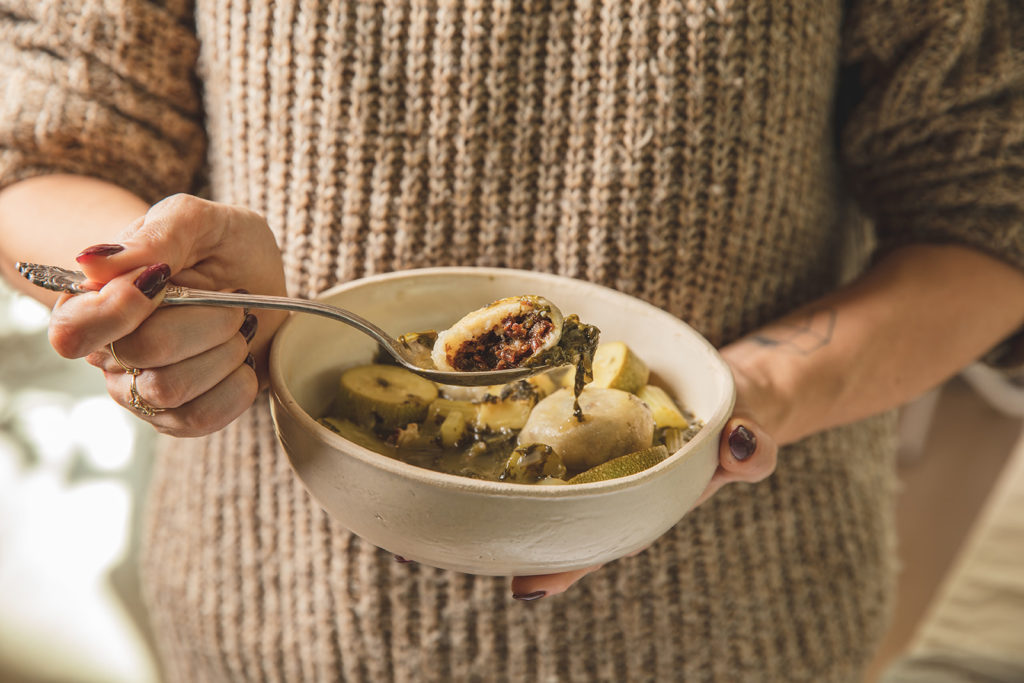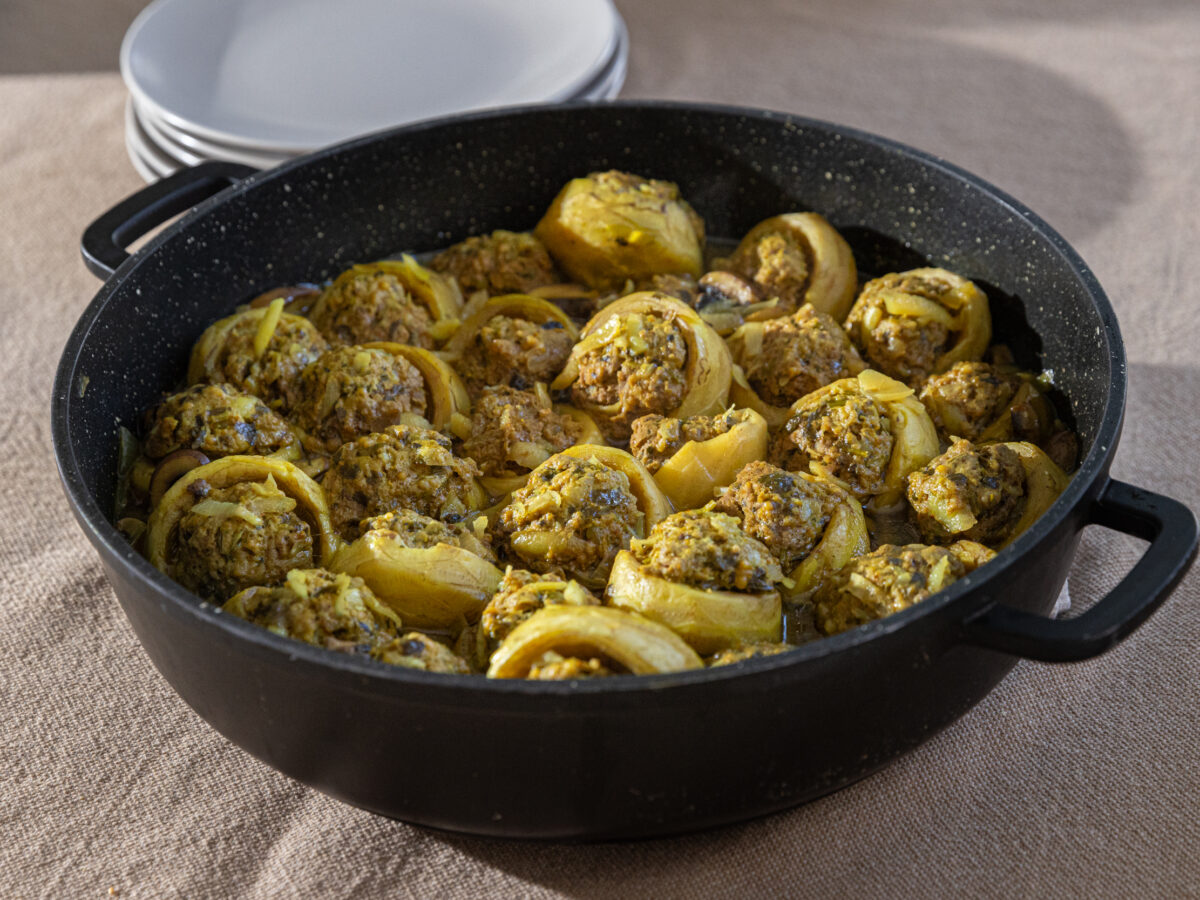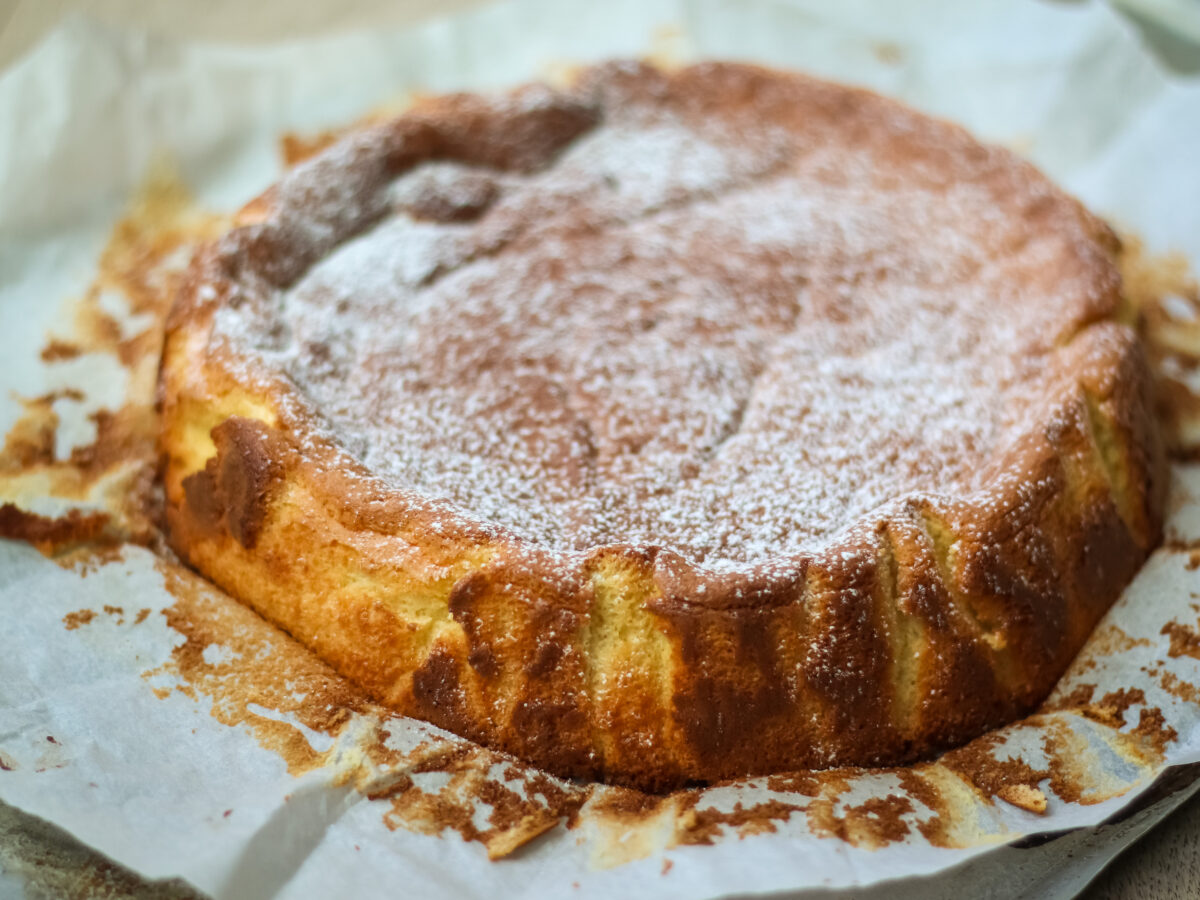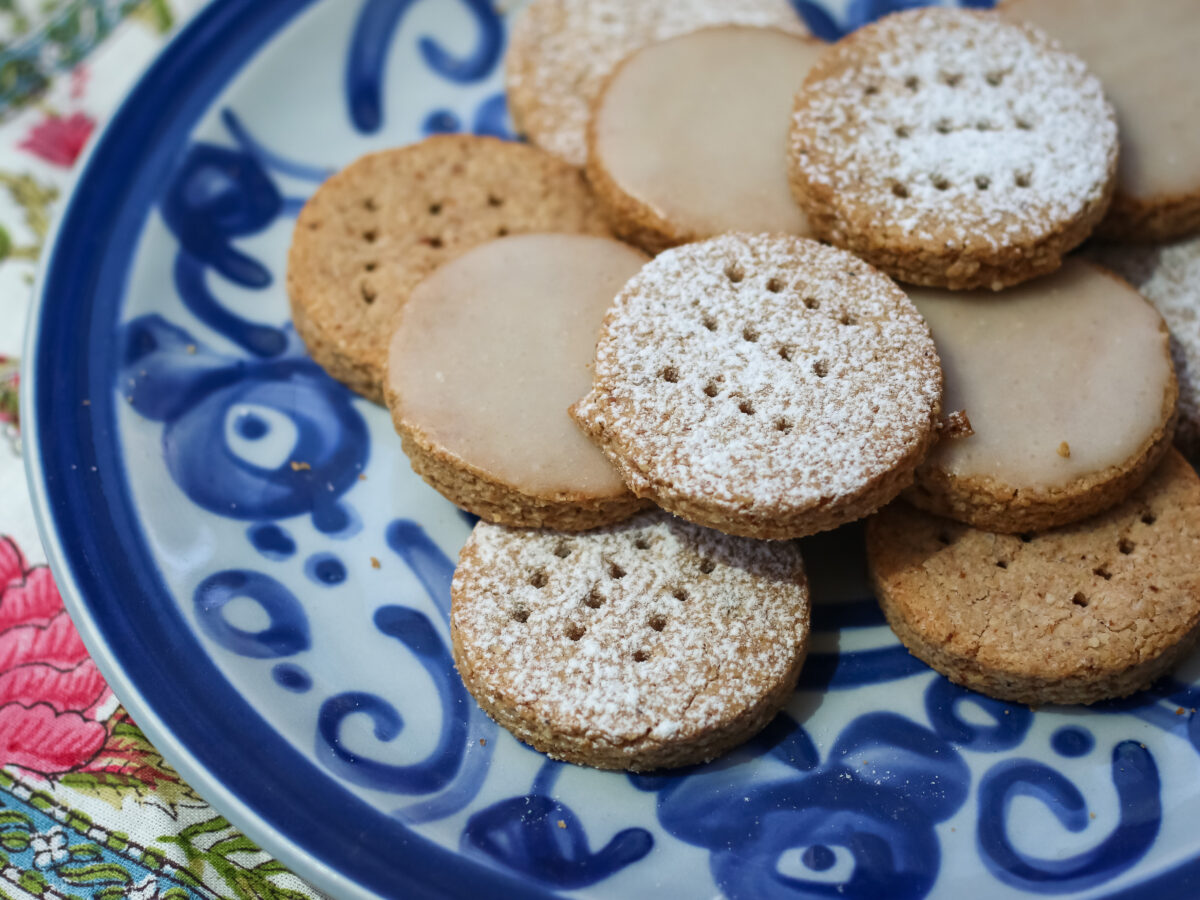
The tangy and aromatic kubbeh hamusta soup is a testament to the Kurdish Jewish community’s deep love of all things sour. The use of noo’ah — wild arum — points to another nuance of this ethnic cuisine; the Kurdish relationship to the land and nature.
Gifted chef Yaniv Gur Arieh descends from a Kurdish family from the city of Zakho, that preserved an important culinary tradition: kubbeh made with a short-grain rice shell. This tradition was passed on to him through his aunt Yemima’s husband. No one knows where the recipe originated, as his family migrated between countries. But once it reached Yaniv’s family, it became the family signature and today the whole clan prepares their kubbeh this way.
His recipe is an intriguing combination of a preserved ancient culinary tradition, a close relationship to the land and the seasons (since arum is foraged at the height of winter) and the meticulousness of a professional chef. Yaniv weighs the filling for each portion to produce uniform-sized dumplings with a perfect shell-to-filling ratio. He also adds fresh lemon zest to the soup, which isn’t part of the traditional recipe, but brings a bright note. All of this, plus the surprising sisca filling (also known as keila — slow cooked crumbled meat poached in its own fat) produces a dish worth every inch of effort it takes to make.
As you gain more experience forming the kubbeh, the preparation time shortens. It’s best to invite a friend or loved one to help and keep you company. The recipe will feed a large crowd. You can also freeze the kubbeh and make the soup at a later date.
Note: Arum leaves can be hard to source in the U.S. but can easily be substituted with a mix of chard and sorrel, or chard alone. If you opt for the latter, add lemon juice to the soup to amp up its sourness.
If you are able to track down arum leaves, know that they require special attention. They contain an acidic agent called calcium oxalate that cause irritation and must be broken down. Kurds and Arabs have developed different methods for treating the plant. No matter which way you choose, the important thing is to rely on their extensive experience in the subject and wear gloves for extra security. This recipe only calls for the leaves; pluck them from the stem in a pulling motion, getting rid of the fibers. Rinse well and cut into thin strips (cutting breaks down the calcium oxalate). Prolonged cooking with the sorrel — an important component in neutralizing the acid — will finalize this process.
Check out more kubbeh recipes and explore the centuries-long history of this iconic regional dish here.
Ingredients
- For the filling (siska):
- 4.4 lb / 2 kg fatty cut of beef (eg ribs or beef chuck), cut into 2-cm cubes
- 7 oz / 200 grams beef fat, finely chopped
- 1 medium-size onion, finely chopped
- 5 garlic cloves, minced
- 3 young celery stalks, without the leaves, finely chopped
- Salt and black pepper, to taste
- For the dough:
- ¾ cup short-grain rice
- 2½ cups / 600 ml water
- Pinch of salt
- Approx. 3½ cups / 700 grams semolina
- For the soup:
- Step 1
- 4 tablespoons vegetable oil
- 2 medium onions, finely chopped
- Leaves from 7 celery stalks
- 5 garlic cloves, minced
- 1.3 lb / 600 grams kardi leaves, cut off the stalk and cut into thin strips
- 1.3 lb / 600 grams sorrel leaves, washed and finely chopped (note: if using kardi, the sorrel is a must)
- 1 liter / 1 qt water
- 2 lemons, juiced and zested
- Salt and ground black pepper, to taste
- Step 2
- 3 medium-size potatoes, peeled and cut into 3-cm cubes
- 4 zucchinis, cut into 1-cm rounds
- 4 celery stalks, without the leaves, cut into 3-cm pieces
Preparation
- Prepare the filling: Heat a heavy skillet over high heat until sizzling hot. Add the meat and fat and fry until golden. Reduce to a low heat and cook the meat for about 1½ hours (it will look burnt on the outside, but will continue to cook in its own fat and liquids). Season with salt and ground black pepper, stirring occasionally. When ready, the meat will be dry and crumbly. Strain (reserving the fat for the next step), cool and crumble by hand or using a knife.
- Heat some of the fat in a pan over medium-high heat. Add the chopped onion and fry until golden. Add the minced garlic and celery and stir for 1 minute. Add the meat, season and mix well. Remove from the heat and cool. Divide the filling into 45 portion each weighing 15 grams / 0.5 oz, about 1 tablespoon. Shape into balls and set aside.
- Prepare the dough: Place the rice and water in a pot and bring to a boil over a high heat. Reduce to a low heat, season with a little salt, cover and cook for 15 minutes. Leave the pot covered and let cool for 2 hours.
- Transfer the rice to a large bowl and add the semolina gradually, while mashing and kneading, into a hard yet elastic dough (make sure it is not sticky or crumbly). Let rest for 20 minutes. Divide the dough into 45 balls weighing 20 grams / 0.7 oz each.
- Assemble the kubbeh: Using your hands, flatten a dough ball into a large disc, 2-3 mm thick. Place a filling ball in the center and, using gentle movements, cover the dough over the filling. Lightly press into a slightly flattened disc. Repeat this with the remaining dough and filling.
- Prepare the soup (step 1): Heat the oil in a 5-liter / 5 qt pot over a medium heat. Add the onion and fry until softened, about 7 minutes. Add the minced garlic and celery leaves and stir for 1 minute. Add the kardi leaves and sorrel and stir for 3 minutes, until the leaves have completely wilted. Pour in the water and lemon juice, add the lemon zest, season and bring to a boil. Cover, reduce to a low heat, and cook for 45 minutes.
- Taste the soup and notice if there is a tingling sensation on your tongue or palate — if so, cook for another 15 minutes. Otherwise, proceed to the next step.
- Prepare the soup (step 2): Add the diced potatoes and cover with water until the pot is ¾ full. Taste and adjust the seasoning if necessary. Increase to a medium heat and cook uncovered for 15 minutes. Add the remaining vegetables and cook for 10 minutes, until the celery softens and changes its color. Taste and adjust the seasoning to your taste.
- Cook the kubbeh: it is customary to cook for the number of diners served at any given time, allowing 3-4 kubbeh per person. Reserve the remaining soup for the next day or future guests to arrive. Simply add the kubbeh to the boiling soup and cook over a medium heat for 15 minutes, until the dough softens slightly.




